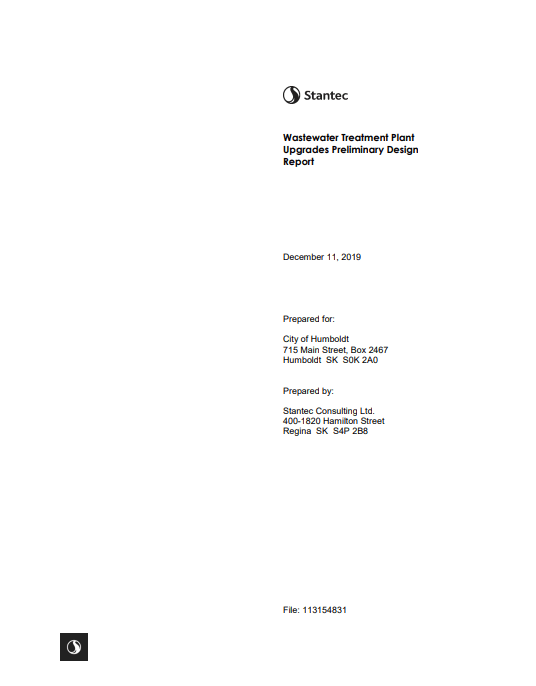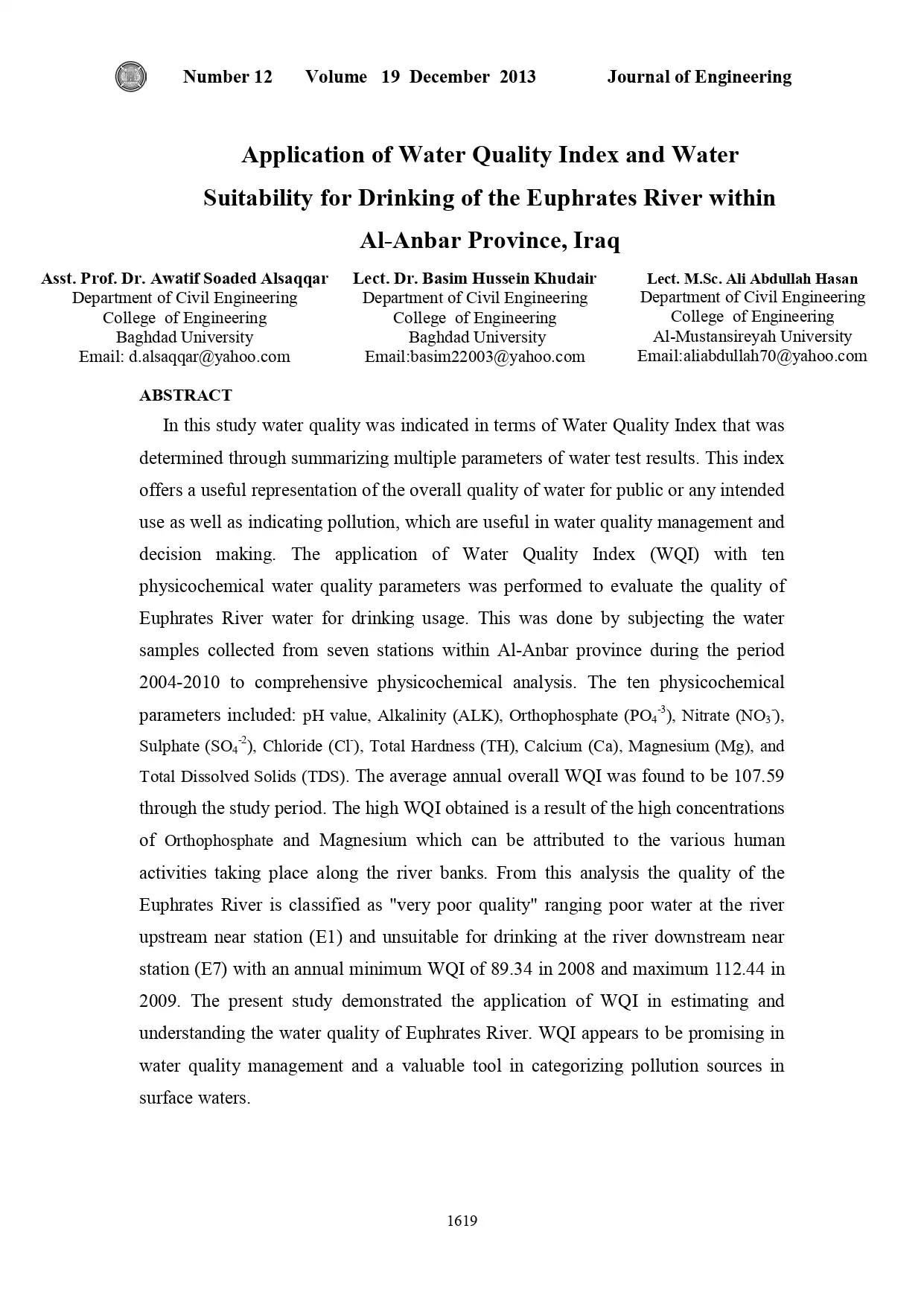Wastewater Treatment Plant Upgrades Preliminary Design Report
Usually dispatched in 2 to 3 days
Usually dispatched in 2 to 3 days
Category:
Drinking Water Treatment
Only logged in customers who have purchased this product may leave a review.
Related products
An Integrated Photoelectrochemical Zero Liquid Discharge System for Inland Brackish Water Desalination
Surging population, energy demands, and climate change will push us, ever more urgently, to find new approaches to meet growing water demands. Most often, this will involve harvesting lower quality or impaired water supplies (e.g., seawater or brackish groundwater) as a source for drinking water. Recently desalination using membrane-based processes (e.g., reverse osmosis [RO], electrodialysis [ED], and nanofiltration [NF]) has shown promise for providing additional sources of fresh water across the United States. However, the current membrane separation processes are commonly energy intensive and produce large volumes of concentrated brine which poses unique challenges. Particularly in land-locked urban center brine disposal often relyes on surface water discharge or deep-well injection which pose economic and practical difficulties for wide-spread adoption of such technologies. Thus, there is an urgent need for energy-efficient desalination technologies that reduce the amount of concentrate produced, or identify cost-effective solutions for concentrate management.
An Integrated Photoelectrochemical Zero Liquid Discharge System for Inland Brackish Water Desalination
Surging population, energy demands, and climate change will push us, ever more urgently, to find new approaches to meet growing water demands. Most often, this will involve harvesting lower quality or impaired water supplies (e.g., seawater or brackish groundwater) as a source for drinking water. Recently desalination using membrane-based processes (e.g., reverse osmosis [RO], electrodialysis [ED], and nanofiltration [NF]) has shown promise for providing additional sources of fresh water across the United States. However, the current membrane separation processes are commonly energy intensive and produce large volumes of concentrated brine which poses unique challenges. Particularly in land-locked urban center brine disposal often relyes on surface water discharge or deep-well injection which pose economic and practical difficulties for wide-spread adoption of such technologies. Thus, there is an urgent need for energy-efficient desalination technologies that reduce the amount of concentrate produced, or identify cost-effective solutions for concentrate management.
Removal of Aluminium from Drinking Water
Aluminium in drinking water comes from natural sources and the alum used as coagulant in the water treatment process. Exposure to aluminium has been implicated in dialysis dementia, Parkinson and Alzheimer’s disease. Drinking water containing aluminium was considered to be one of the main sources of Al intake into human body. For this reason, the removal of aluminium from drinking water is vital to our health. In this study, removal of aluminium was carried out by using a chelating resin.
Removal of Aluminium from Drinking Water
Aluminium in drinking water comes from natural sources and the alum used as coagulant in the water treatment process. Exposure to aluminium has been implicated in dialysis dementia, Parkinson and Alzheimer’s disease. Drinking water containing aluminium was considered to be one of the main sources of Al intake into human body. For this reason, the removal of aluminium from drinking water is vital to our health. In this study, removal of aluminium was carried out by using a chelating resin.
Aerogel & Iron-Oxide Impregnated Granular Activated Carbon Media For Arsenic Removal
The goal of this project is to validate proof-of-concept testing for iron enriched granular activated carbon (GAC) composites (aerogel-GAC or iron-oxide impregnated) as a viable adsorbent for removing arsenic from groundwater and conduct technical and economic feasibility assessments for these innovative processes. Specific project objectives include: • Conduct batch experiments for aerogel-GAC and Fe-oxide impregnated GAC composites to evaluate their performance removing arsenic.
• Evaluate Fe-GAC media performance in rapid small scale column tests (RSSCTs) to assess arsenic removal in a more dynamic treatment system.
• Evaluate Fe-GAC potential for removal of other contaminants (e.g., methyl tertiary butyl ether, dissolved organic carbon).
• Characterize Fe-GAC media.
• Correlate performance and media characterization for possible selection of two media for a future second phase of this project.
Aerogel & Iron-Oxide Impregnated Granular Activated Carbon Media For Arsenic Removal
The goal of this project is to validate proof-of-concept testing for iron enriched granular activated carbon (GAC) composites (aerogel-GAC or iron-oxide impregnated) as a viable adsorbent for removing arsenic from groundwater and conduct technical and economic feasibility assessments for these innovative processes. Specific project objectives include: • Conduct batch experiments for aerogel-GAC and Fe-oxide impregnated GAC composites to evaluate their performance removing arsenic.
• Evaluate Fe-GAC media performance in rapid small scale column tests (RSSCTs) to assess arsenic removal in a more dynamic treatment system.
• Evaluate Fe-GAC potential for removal of other contaminants (e.g., methyl tertiary butyl ether, dissolved organic carbon).
• Characterize Fe-GAC media.
• Correlate performance and media characterization for possible selection of two media for a future second phase of this project.
Analysis of the Membrane Alternatives Suitable for Kvarnagården Water Treatment Plant.
In this study surveys to membrane manufacturers and water treatment plants regarding the performance of different membrane alternatives have been carried out from January to April 2012. The work has been done as a part of a study of the different membrane alternatives suitable for Kvarnagården Water Treatment Plant. Also in the study experiments regarding water quality parameters have been carried out at the water laboratory at Chalmers University of Technology. The project is carried out at the Department of Civil and Environmental Engineering and is connected to the company VIVAB, the company in charge of Kvarnagården Water Treatment Plant.
Analysis of the Membrane Alternatives Suitable for Kvarnagården Water Treatment Plant.
In this study surveys to membrane manufacturers and water treatment plants regarding the performance of different membrane alternatives have been carried out from January to April 2012. The work has been done as a part of a study of the different membrane alternatives suitable for Kvarnagården Water Treatment Plant. Also in the study experiments regarding water quality parameters have been carried out at the water laboratory at Chalmers University of Technology. The project is carried out at the Department of Civil and Environmental Engineering and is connected to the company VIVAB, the company in charge of Kvarnagården Water Treatment Plant.
Appropriate Technologies For Drinking Water Treatment In Mediterranean Countries
This paper aims at analyzing the drinking water issue in the Mediterranean region, highlighting the principal problems and the appropriate technologies applicable in the different countries. The countries of this area are characterized by a huge variety from social, cultural, economic and environmental point of view. In particular, water distribution is inhomogeneous between the North, East, and South; even the type of water sources and the related quantity and quality problems differ country by country. Potable water comes from brackish and seawater, surface water, groundwater and water reservoirs with each source face different issues. The main problem of brackish and seawater for example is the high salinity and the contamination by disinfection byproducts, in addition to the microbiological and chemical contamination due to human activities that characterize also other surface water sources. Groundwater is also affected by human activity and it is not exempted from salinity because of the water intrusion. Moreover, water reservoirs are often contaminated by seasonal algal blooms. Technologies applied for drinking water treatment vary country by country. The paper presents the main treatment processes
associated with the main water pollutants, according to the Mediterranean region. Case studies of drinking water treatment plants are also analyzed, presenting alternative technologies appropriate for specific contexts, among others. The characteristics of each specific context should be carefully analyzed in order to develop the most appropriate technologies; high-end technologies for drinking water treatment may not be applied equally to all countries or communities of the Mediterranean region.
Appropriate Technologies For Drinking Water Treatment In Mediterranean Countries
This paper aims at analyzing the drinking water issue in the Mediterranean region, highlighting the principal problems and the appropriate technologies applicable in the different countries. The countries of this area are characterized by a huge variety from social, cultural, economic and environmental point of view. In particular, water distribution is inhomogeneous between the North, East, and South; even the type of water sources and the related quantity and quality problems differ country by country. Potable water comes from brackish and seawater, surface water, groundwater and water reservoirs with each source face different issues. The main problem of brackish and seawater for example is the high salinity and the contamination by disinfection byproducts, in addition to the microbiological and chemical contamination due to human activities that characterize also other surface water sources. Groundwater is also affected by human activity and it is not exempted from salinity because of the water intrusion. Moreover, water reservoirs are often contaminated by seasonal algal blooms. Technologies applied for drinking water treatment vary country by country. The paper presents the main treatment processes
associated with the main water pollutants, according to the Mediterranean region. Case studies of drinking water treatment plants are also analyzed, presenting alternative technologies appropriate for specific contexts, among others. The characteristics of each specific context should be carefully analyzed in order to develop the most appropriate technologies; high-end technologies for drinking water treatment may not be applied equally to all countries or communities of the Mediterranean region.
Application of Water Quality Index and Water Suitability for Drinking of the Euphrates River within Al-Anbar Province, Iraq
In this study water quality was indicated in terms of Water Quality Index that was determined through summarizing multiple parameters of water test results. This index offers a useful representation of the overall quality of water for public or any intended use as well as indicating pollution, which are useful in water quality management and decision making. The application of Water Quality Index (WQI) with ten physicochemical water quality parameters was performed to evaluate the quality of Euphrates River water for drinking usage. This was done by subjecting the water samples collected from seven stations within Al-Anbar province during the period 2004-2010 to comprehensive physicochemical analysis.
Application of Water Quality Index and Water Suitability for Drinking of the Euphrates River within Al-Anbar Province, Iraq
In this study water quality was indicated in terms of Water Quality Index that was determined through summarizing multiple parameters of water test results. This index offers a useful representation of the overall quality of water for public or any intended use as well as indicating pollution, which are useful in water quality management and decision making. The application of Water Quality Index (WQI) with ten physicochemical water quality parameters was performed to evaluate the quality of Euphrates River water for drinking usage. This was done by subjecting the water samples collected from seven stations within Al-Anbar province during the period 2004-2010 to comprehensive physicochemical analysis.
Introduction to Water Treatment
This is an introduction to water treatment systems and technology. It is not a design manual or an exhaustive treatise. It is intended for engineers who are not regularly involved in water treatment projects, but who are interested in learning some of the basics involved. Criteria to be followed in determining the necessity for and the extent of treatment are discussed here, as are procedures applicable to the planning of water treatment projects.
Introduction to Water Treatment
This is an introduction to water treatment systems and technology. It is not a design manual or an exhaustive treatise. It is intended for engineers who are not regularly involved in water treatment projects, but who are interested in learning some of the basics involved. Criteria to be followed in determining the necessity for and the extent of treatment are discussed here, as are procedures applicable to the planning of water treatment projects.
Recommended Standards for Water Works
A Report of the Water Supply Committee of the Great Lakes--Upper Mississippi River Board
of State and Provincial Public Health and Environmental Managers
Recommended Standards for Water Works
A Report of the Water Supply Committee of the Great Lakes--Upper Mississippi River Board
of State and Provincial Public Health and Environmental Managers













Reviews
There are no reviews yet.